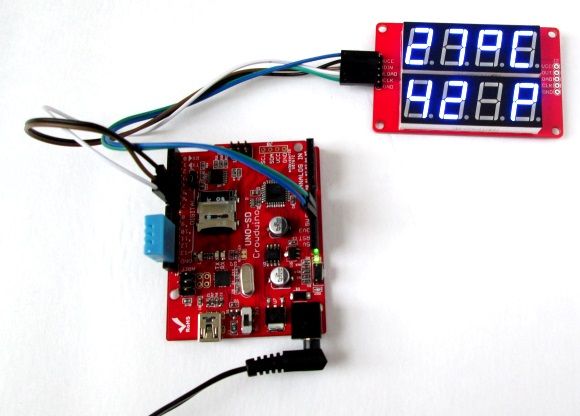Things required to build this project
Arduino Uno board
I am using Crowduino Uno SD board, which is manufactured by Elecrow and is fully compatible with Arduino Uno board. Crowduino has the following additional features that the standard Arduino Uno board doesn’t have.
1 Reset button is placed on the left side edge, and thus more convenient to access.
2 Improved power supply circuit with selectable 3.3V and 5.0V for operation.
3 Uses the mini USB connector to avoid the potential risk of connecting to the shield plugged in.
4 Micro SD card slot on board, which makes this board useful for data logging applications.
DHT11 sensor
DHT11 is an ultra low cost digital sensor for measuring temperature and relative humidity. It operates from 3.0-5.0V and provides calibrated digital outputs for temperature (in degree Celsius) and humidity through a single wire serial interface. It can measure humidity ranging from 20-80% with 5% accuracy, and temperature ranging from 0-50 degree Celsius with 2% accuracy. When it is active, the maximum current consumption is 2.5mA. The sensor has 4 pins with 0.1” spacing as shown below.
MAX7219-based seven segment display
The next thing required to do this project is two rows of 4-digit seven segment LED displays for displaying temperature and humidity simultaneously. This project uses SPI7SEGDISP8.56-2R display module, which is MAX7219 driven and allows you to control all 8 digits through a 3-wire serial interface. The display brightness can also be adjusted through software commands. In addition, library routines are available for interfacing the SPI7SEGDISP8.56-2R module to Arduino. This project, in particular, uses the LedControl library.
For more detail: Step-by-step guide for making a very simple temperature and humidity meter

